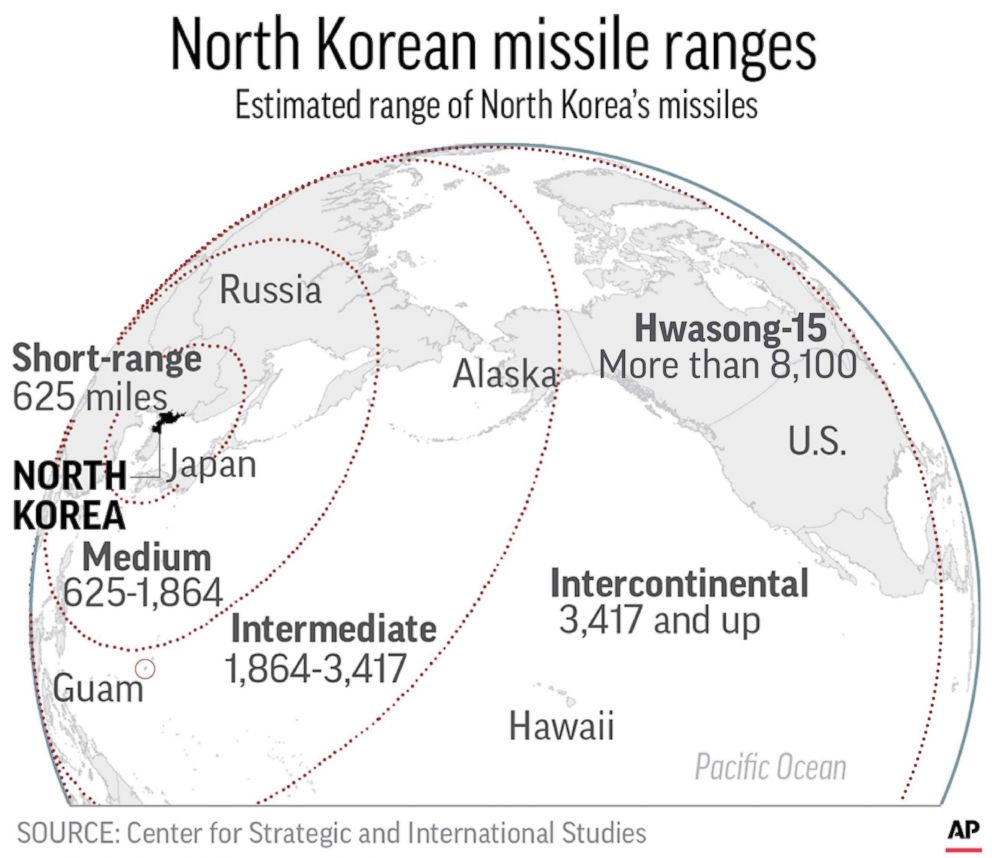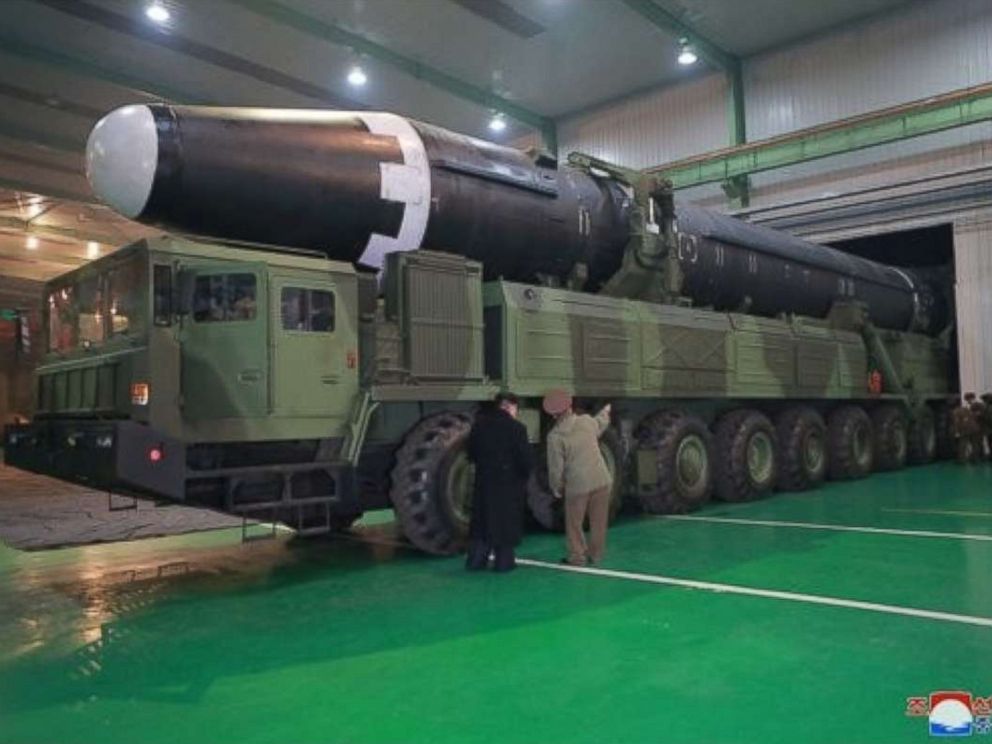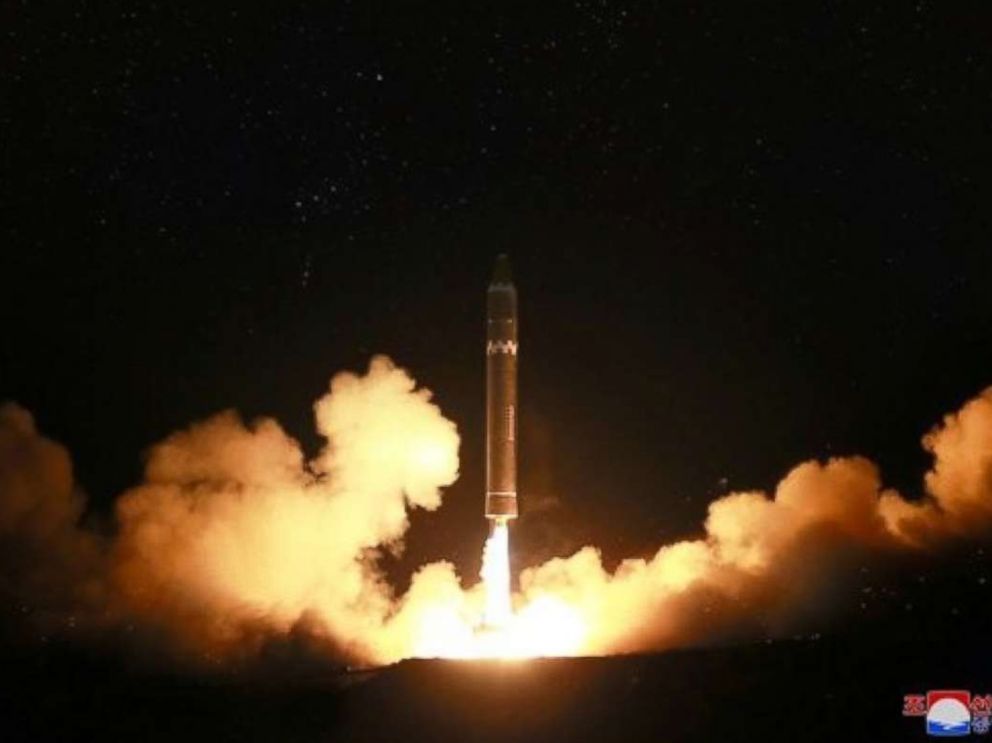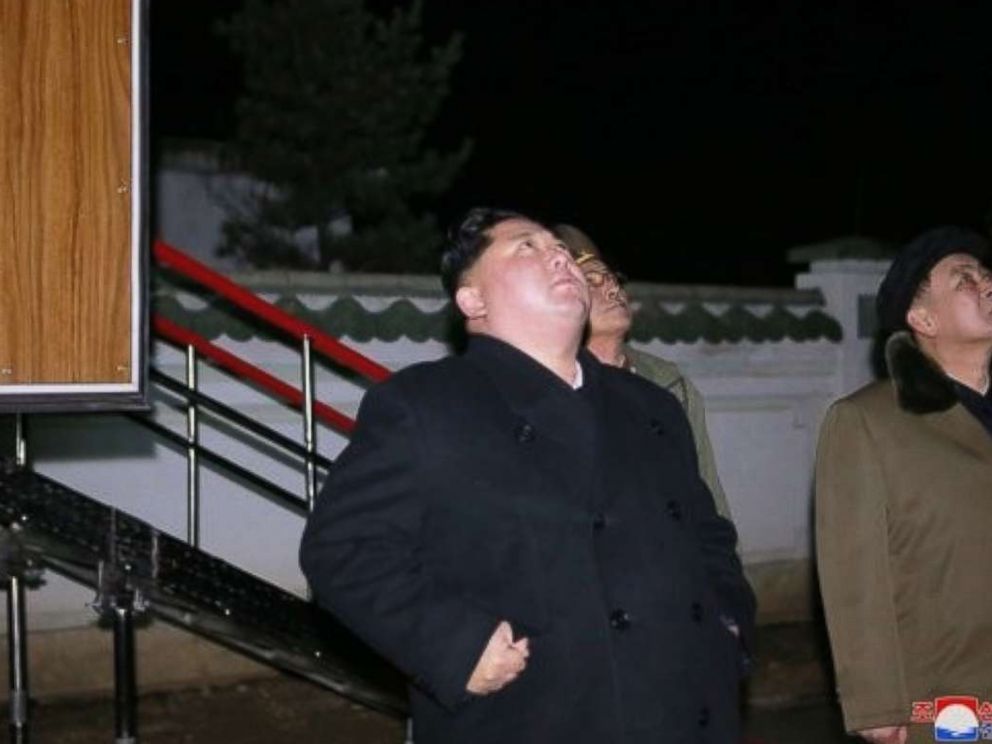US intelligence agencies assessing N. Korean missile analysts say is capable of hitting mainland US
WATCH US intelligence agencies assessing N. Korean missile launch
U.S. intelligence agencies are still assessing North Korea’s claim that it has developed a dangerous new type of missile even as national security analysts say they have determined there is enough information that suggests the missile launched Tuesday could reach all of the U.S. mainland as North Korea has claimed.
North Korea announced on state television Tuesday night that it had tested a new type of mobile-launched intercontinental ballistic missile (ICBM), called the Hwasong 15, that it said was capable of carrying a nuclear warhead to the mainland United States. U.S. intelligence analysts are looking at the test, including the possibility it could have been a three-stage missile.
 AP
APAnnouncers described the new missile as being “significantly more" powerful than the two Hwasong 14 ICBM’s North Korea launched in July.
According to three U.S. officials, U.S. intelligence agencies are still carrying out an analysis of Tuesday’s missile launch and they say it could be weeks before a final determination can be made if it is a new type of missile.
 KCNA
KCNAOne official said initial information indicated the North Korean missile may have consisted of three stages during its boost phase. That would be a different type of missile from the two ICBM's fired in July that were two-stage missiles. Several officials said analysts are continuing to assess how different the missile launched Tuesday may have been from the earlier ICBM's.
 KCNA/Reuters
KCNA/ReutersInitial U.S. assessments following Tuesday's launch described the missile as generally being what the U.S. calls a KN-20, or Hwasong 14, like the two ICBM’s launched in July.
The North Korean missile launched Tuesday reached an altitude of more than 2,700 miles and flew for 54 minutes. It traveled laterally for 590 miles before landing in the Sea of Japan, according to a U.S. official.
Flattening out the missile’s altitude gives it a trajectory of about 8,000 miles, according to Joe Cirincione, president of the Ploughshares Fund. With that reach the missile could hit every part of the Eastern seaboard of the United States.
“This thing could hit Cuba, it could hit Jamaica,” said Cirincione.
 KCNA
KCNABut the missile’s maximum range also depends on how heavy of a nuclear weapons payload it could carry. The lighter the payload the farther it will travel.
Those calculations are often done assuming a one-ton payload, but North Korea’s technology may have advanced to the point where they have a smaller warhead that weighs a half-ton, according to Cirincione.
Tom Karako, director of the Missile Defense Project at the Center for Strategic and International Studies, agrees that an 8,000-mile estimate is possible.
"They're being provocative, they're testing us and they're running a kind of brinkmanship game," said Karako.
 KCNA
KCNAIt took a day for North Korea to release photos of the nighttime launch, a slower timeline than earlier launches this year. Those images have helped U.S. intelligence determine North Korea’s missile capabilities.
Officials had said prior to Tuesday’s launch that there had been activity in North Korea consistent with earlier preparations for a missile launch.
- Star
Add Interests Customize your news feed by choosing the topics that interest you.
To save your interests across all devices Log In or Sign Up »Source – abcnews.go.com

